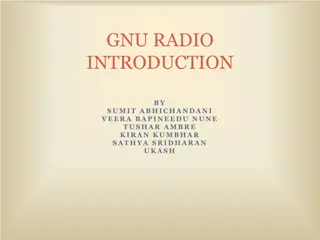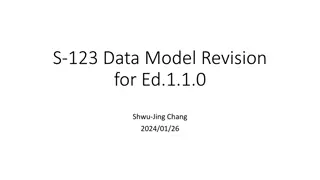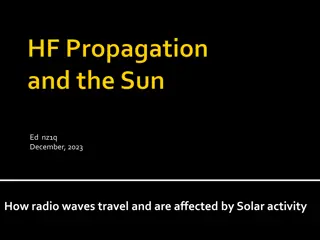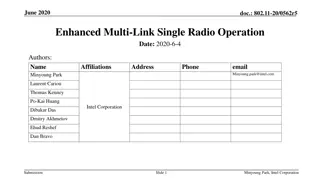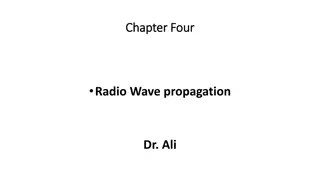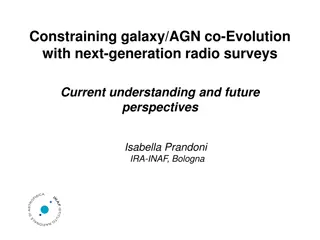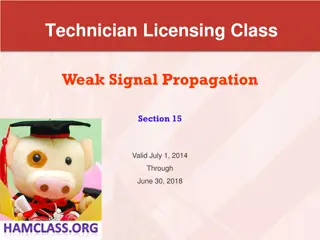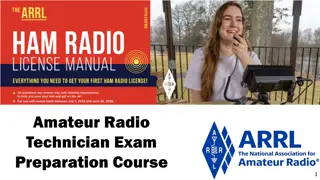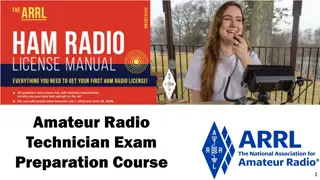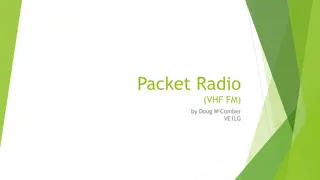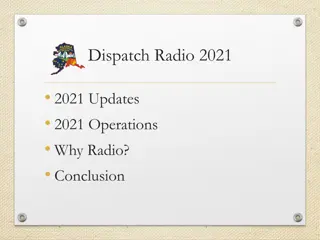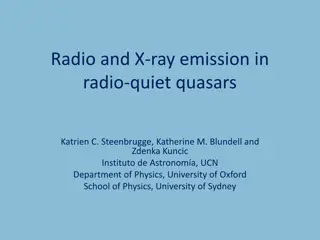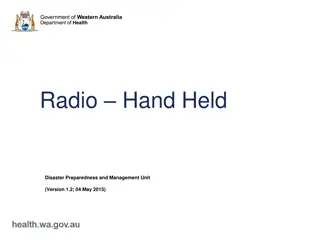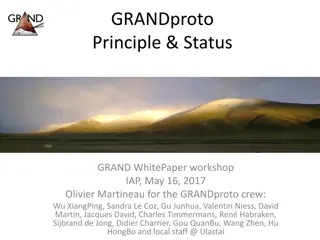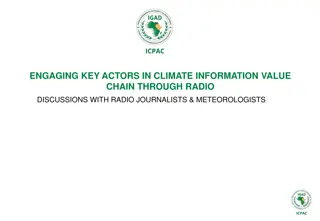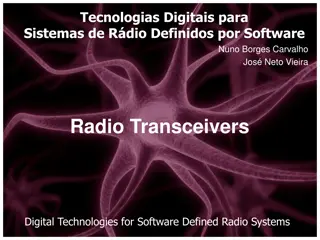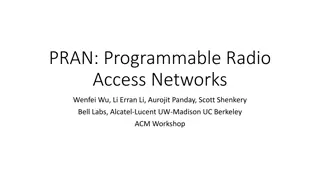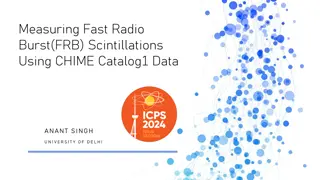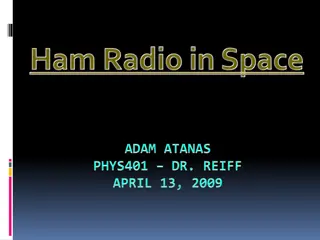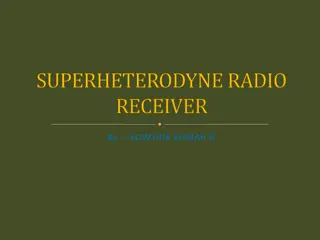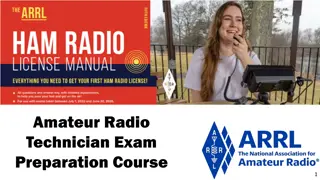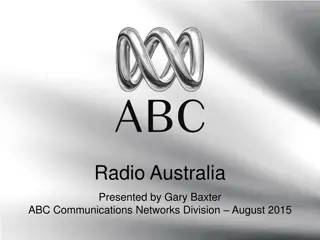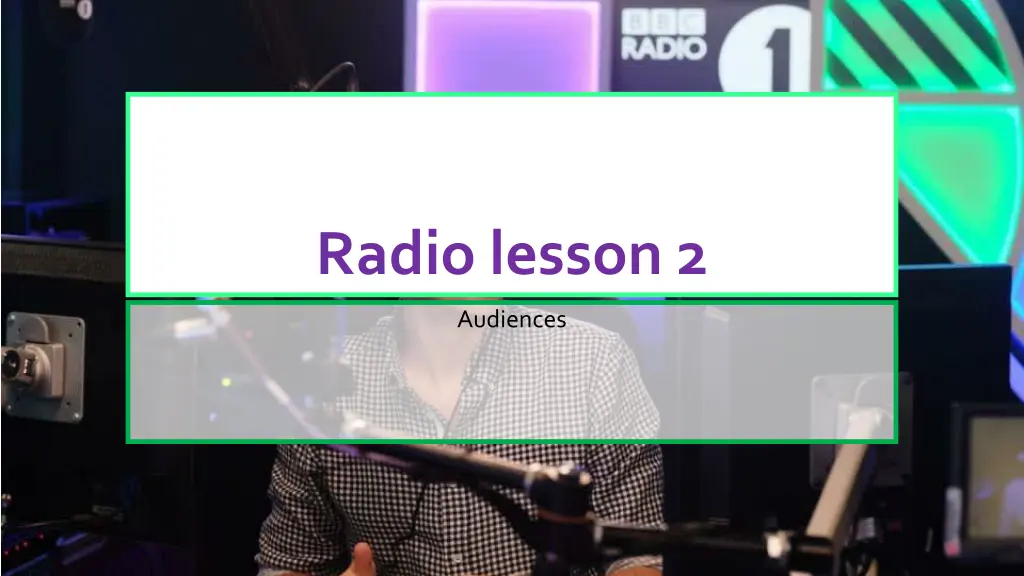
Understanding BBC Radio One Audience Research
Explore the audience research for BBC Radio One Breakfast Show, including RAJAR data collection methods, audience reach, and interaction strategies. Learn about listening habits and comparison of radio stations' figures.
Download Presentation

Please find below an Image/Link to download the presentation.
The content on the website is provided AS IS for your information and personal use only. It may not be sold, licensed, or shared on other websites without obtaining consent from the author. If you encounter any issues during the download, it is possible that the publisher has removed the file from their server.
You are allowed to download the files provided on this website for personal or commercial use, subject to the condition that they are used lawfully. All files are the property of their respective owners.
The content on the website is provided AS IS for your information and personal use only. It may not be sold, licensed, or shared on other websites without obtaining consent from the author.
E N D
Presentation Transcript
Radio lesson 2 Audiences
Lesson aims: To identify and explore the audience for BBC Radio One Breakfast Show To listen to a broadcast and note content To link the content to the Radio One remit and audience tastes To understand Radio One s audience reach and ways that audiences can interact with the programme.
RAJAR: Radio Joint Audience Research RAJAR is the official body in charge of measuring radio audiences Data is obtained by asking participants to keep a diary over a 7 day period One adult (15+) and up to two children per householdin the survey The paper diary is customised. Each participant is asked to sort through a set of cards with the names of all the radio stations in the area and invited to select all the stations which they might listen to or hear in various situations. All paper diaries are collected personally by interviewers at the endof the sevendays. The online diary station selection is carried out by the participant, each person is asked to look through a set of station names onscreen that are available in the area and invited to select all the stations which they might listen to or hear in various situations Each area of the UK is covered by the research. You cannot volunteer to participate you are chosen and approached by researchers to take part.
Rajar listening figures: annual summary Let s look at the InfoGraphic from Rajar, summarizing annual Radio listener habits (next slide). What does this tell us about how and when people listen to the radio? Which is the most surprising fact for you on the InfoGraphic?
Lets take a look at the RAJAR figures for the last quarter WHo Which BBC Radio station has the highest listening figures? Why do you think this is? Why do you think the listening figures for Radio One are low in comparison? https://www.rajar.co.uk/listening/quart erly_listening.php
Audience for BBC Radio One: research task Look at Radio One Breakfast Show website, associated Youtube and social media using the handout. Each person in your group should look at a different platform. From this identify who the target audience is. How does the programme attempt to interact with its listeners? Identify all the different ways that audience interaction can take place.
Feedback What did you discover?
Listening to a broadcast You will be placed in a group Each group will listen to a separate 30 minute section from the Radio One Breakfast Show (22nd January 2018). You will use the grid to identify all the contents of your section. You must pay attention to the Playlist for BBC Radio One and put a star next to any songs you hear that feature on this. Once you ve completed the grid, you must answer the questions. Your grid will be given in and your teacher will make a copy of it.
Feedback: How does the programme promotes British music? What percentage of tracks played during your slot were British? What genres of music were played during your slot? Do a tally. Celebrity interviews who is being interviewed and what are they being interviewed about? How many of the interviews are with British people? News items list the stories and identify which relate to Britain. Quizzes and games what can you win? How does the broadcast fits into the BBC ethos of informing, educating and entertaining ? How does it differ from commercial breakfast shows? Who you think the audience is from the content of your section? What evidence do you have for this? What platforms is the show is distributed on?
Putting the timeline together Now that you have the whole timeline for the show, discuss the following question with your group: How does the Nick Grimshaw Radio One Breakfast show meet the Radio One service licence agreement? (Public purposes, remit and ethos). Identify at least three ways that it does this, with evidence. Be prepared to feedback to the board. Reminder of the public purposes: Impartial news and information Supporting learning for all ages Creative and highest quality distinctive output Reflect, represent and serve the diverse communities of the UK Reflect the UK, its culture and values.
How does the Radio One Breakfast Show reach its audience? Writing Task To help you with this, refer to: BBC s Mission, Values and Vision Your research into the Radio One Breakfast Show platforms Raja Statistics Your section of the running order (to illustrate your points). You have 20 minutes to plan this (which you can do as a group) and then 25 minutes to answer it.
Homework: Produce a detailed infographic of the audience for BBC Radio One Breakfast Show.

